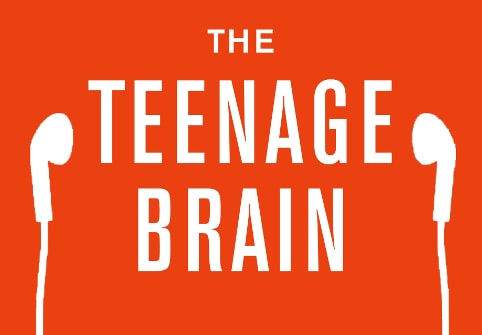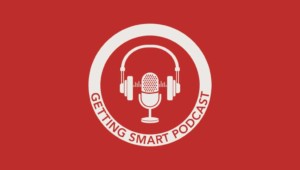The Teenage Brain: Scaffolding the Brain for Lifelong Learning

Dr. Frances Jensen
The brain is the last organ in the body to mature, and recent neuroscience has uncovered remarkable facts about brain development. While it has been well known that the infant and childhood brain have a capacity for accelerated learning, it is only recently that we have understood that the brain is also dynamically growing in adolescent and young adulthood. Since as long ago as the early 1980’s, research has identified a so-called “critical period” in early childhood, when a child can learn multiple languages or acquire rapid proficiency at a sport or musical instrument. Learning is in part a product of connections being made between brain cells, or neurons. These connections, called synapses, are at higher levels in the child brain than in the adult, and can strengthen in response to activation much faster than the adult. Synaptic strengthening due to activation and use is called “plasticity” as it is molded by the experience that activates the brain. This understanding that experience can modify brain development has formed the basis of many successful applications in childhood such as early enrichment programs and head start curricula. However, until the last decade, it was largely assumed – even by scientists – that the brain reached full maturity around puberty. Recent research has dispelled these myths, and it is now known that the brain is not fully mature until the mid-twenties, and that the teen brain in particular is not simply and adult brain with fewer miles on it.
What has been discovered about the state of the teen and young adult brain is nothing short of miraculous. First, it is clear that synapses in the teenage brain still have much plasticity: not as much as the child, but certainly more than they will have in adulthood. It’s often been referred to as a “second critical period”. Hence the ability to learn and memorize is much stronger and easier in this age window. In fact, recent research has shown that IQ can even change in the teen years! Synapses peak in number during development then decrease into adult years. Teen and young adult (i.e., college) brains are “learning machines”. Ironically, though, the owners of these well-honed machines can imperil this valuable attribute: synaptic plasticity can be easily impaired by sleep deprivation, stress, alcohol, cannabis, and other drugs like MDMA (molly) or cocaine. Ironically, compared to the adult, teenage synapses respond strongly not only to good things but also can be more affected by negative stimuli as well.
Why would the teenagers imperil their brains at such a sensitive stage? Well that gets to the other aspect of brain development: the tendency for teenagers to be high risk-takers. A major difference between the adolescent brain and the adult is that the frontal lobes, the seat of judgment, insight, empathy, and impulse control, is not fully connected yet. The process of connecting tracts between brain regions to each other is a result of a slow insulation of these tracts by a natural substance called myelin. This takes over 2 decades to complete, with the process commencing in the back of the brain and moving forward, leaving the frontal lobes as the last connected region. Hence teens are often challenged with self-organization and impulse control while they on the other hand have revved up learning. Risk taking behavior that is typical of this period in life can lead to excess stress, substance abuse, or other negative experiences that can actually prevent their synapses from functioning normally, and not only affect their grades the next day, but can adversely affect how their brain will function by adulthood.
Teens are great learners, and it is really important for both parents and the teens themselves to know the facts about what this special window of development means in terms of strengths and vulnerabilities. Most research is very new, and this is the first teen generation to have the benefit of this information. Teens and young people are data-driven, after all, and there is an wave of new facts about the adolescent brain. Teens should be empowered by this new knowledge. Given their plasticity, the teen period is a great time to work on building strengths and correcting weaknesses – much easier done than later as an adult. Parents should take an active role in modeling decision making and helping their teens identify their unique skill sets. There is indeed biology to back up the “late bloomer” who does not really start to show strengths until midway through the teen years! Parents and teens should understand the negative effects of stress and sleep deprivation on the process of the synaptic plasticity of learning. As sleep cycles temporarily shift later in adolescence, teens are always on the edge of sleep deprivation with our early starts to the school day. Science shows that teens, while they will hate to admit it, are still vulnerable to the effects of multi-tasking while learning, so parents should help them make choices as to how to focus when studying.
Digital distraction is a huge temptation, especially given their challenges with impulse control. While the neurobiology of the teen brain probably hasn’t changed for millennia, our environment has. There is an unprecedented amount of stimulation out there for the average teen, coming in at an alarming speed, and with a range of content that often can push beyond appropriate for this age group. Teens themselves need to be made aware of their ease of becoming addicted to internet games or social networking, and given their lack of frontal lobe influence they find these activities hard to resist or balance with other life activities. We need to start a conversation with our teens as to what they are experiencing and as adults (as we do have our frontal lobes), we can help them make choices about how they handle their exposure to internet gaming, social networking and other on-demand activities.
As a parent, knowing why your teen is behaving they way they do is part of maintaining your own balance, and should decrease frustration and anger levels, so that parents remain connected, less alienated, from their teens. It’s actually not a time to “suffer” through – it is a time of wondrous change in your child, one of celebration and also fleeting opportunities that will form the scaffold for the brain they will use lifelong.
This blog is part of our Smart Parents series in partnership with the Nellie Mae Education Foundation. For more information about the project, see Parents, Tell Your Story: How You Empower Student Learning as well as other blogs:
- Why Mentors Matter
- Today’s Busy Families are Finding Time to Gather Around the Dinner Table
- Power of Play: Applied Knowledge, Engaged Learning
 Frances E. Jensen, MD is Chair of the Department of Neurology at the Perelman School of Medicine, University of Pennsylvania, and author of the New York Times Bestseller, “The Teenage Brain: A Neuroscientist’s Survival Guide to Raising Adolescents and Young Adults”.
Frances E. Jensen, MD is Chair of the Department of Neurology at the Perelman School of Medicine, University of Pennsylvania, and author of the New York Times Bestseller, “The Teenage Brain: A Neuroscientist’s Survival Guide to Raising Adolescents and Young Adults”.




0 Comments
Leave a Comment
Your email address will not be published. All fields are required.